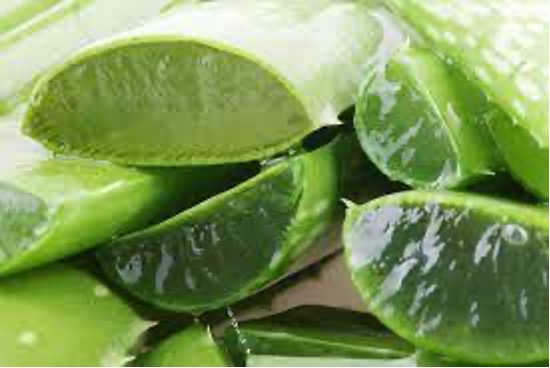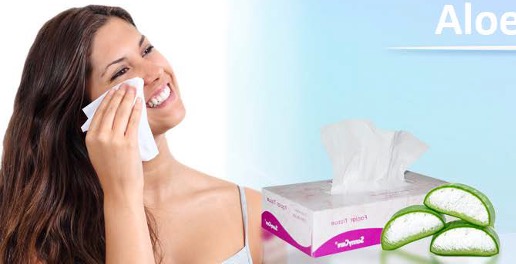Acemannan and Glycolic Acid, a great combination for skin repair.

Acemannan is a specific type of polysaccharide found in Aloe Vera and has remarkable benefits for the skin. Acemannan has moisturizing properties, helping to keep skin soft and supple. It has also been shown to have anti-inflammatory properties, which can soothe irritated skin and reduce inflammation.
Acemannan, a β-(1,4)-acetylated soluble polymannose, is the major bioactive polysaccharide of Aloe vera, from which gel and skin it is extracted, it has been reported to have many pharmacological and biological applications in medical and industrial fields, such as oral diseases, metabolic diseases, cardiovascular diseases, and tumor diseases.
More importantly, more and more studies are paying attention to the applications of acemannan in new materials and drug delivery.
In addition, Aloe Vera acemannan can promote cell regeneration and accelerate wound healing. Helps stimulate collagen production, which is a key protein in maintaining skin elasticity and firmness. This can help reduce the appearance of scars and improve overall skin health and induces tissue repair.
Acemannan also has antioxidant properties, which means it can help protect the skin against oxidative stress and free radical damage. This can help prevent premature aging of the skin and keep it looking younger and more radiant.
Aloe Vera Acemannan offers multiple benefits for the skin, including hydration, anti-inflammation, promotion of cell regeneration, and antioxidant protection.
On the other hand, Glycolic acid is a type of alpha hydroxy acid (AHA), these acids are naturally found in foods. Glycolic acid comes from sugarcane.
People use glycolic acid for acne, aging skin, dark skin patches on the face, and acne scars, which also seem to help reverse sun damage to the skin. In post-menopausal women, a cream containing 0.01% estradiol and 15% glycolic acid, applied to one side of the face for 6 months, induces a significant improvement in reversing markers (rete peg pattern, epidermal thickness) of skin aging.
Reported studies have shown its anti-inflammatory effects and antioxidant action. It acts by thinning the stratum corneum, promoting epidermolysis, and dispersing basal layer melanin and epidermal and dermal hyaluronic acid and collagen gene expression that increases through an elevated secretion of IL-6.
Glycolic acid chemical peels are an effective treatment for all types of acne, inducing rapid improvement and restoration of normal-looking skin. Nowadays it’s recommended by dermatologists for all skin types, depending on the formula. It regulates seborrhoea on young or oily skin, and moisturizes and brightens mature or dry skin, depending on the amount of glycolic acid in each treatment (between 2 and 15%).
Aloe Vera Acemannan is a good thing to combine with a glycolic. It is healing and soothing and, more importantly, is an important anti-inflammatory. Glycolic acid is a great ingredient to reveal fresh, healthy, clear, and radiant skin on the go.
Benefits of combining Acemannan with Glycolic Acid
It soothes and heals.
By increasing collagen synthesis, aloe helps to accelerate burn and wound healing and reduce scar tissue. It is also an effective anti-inflammatory, using antioxidant power to help relieve pain and promote healing, making it ideal for skin conditions like eczema and psoriasis, photodamage, acne, rosacea, striae albae pseudofolliculitis barbae, hyper-pigmentation disorders, actinic keratoses, fine wrinkles, lentigines, melasma and seborrheic keratoses
Reduces fine lines and wrinkles
Glycolic acid reduces the appearance of fine lines and wrinkles by exfoliating the top layer of the skin. Aloe`s Acemannan possesses the ability to interfere with the enzyme that produces melanin deposits in the skin, helping to prevent the formation of ‘liver spots’, which tend to develop in aging skin. When used regularly it may even help to eliminate existing spots and gives overall support to the skin by keeping with anti-aging effects; one of its many?
properties is to enhance collagen synthesis.
Makes the skin feel bright and smooth by keeping the skin hydrated
One of the main functions or benefits of glycolic acid is that its little molecules go deep beneath your skin’s surface and eliminate dead skin cells. This reveals fresh, baby skin that is bright, soft, smooth, and radiant, Aloe Vera gel is an excellent ingredient to achieve and maintain the look and feel of smooth, hydrated skin.
Allows penetration of ingredients
Aloe Lignins are responsible for allowing Aloe Vera Acemannan to penetrate deep into the tissues of the skin, through all seven layers. Aloe Vera can soak into the skin up to seven layers deep. Lignins penetrate the toughened areas of the skin being beneficial for skin problems, Glycolic acid exfoliation properties not only accelerate skin cell rejuvenation but also allow deeper penetration of other skincare ingredients and help achieve maximum benefits. When your skincare products penetrate better and deeper, they work their magic and give you faster results.
Glycolic Acid and Acemannan help other products function better.
Well-exfoliated skin will allow your skin to absorb your other skincare products better, aloe: It makes vitamin C, vitamin E, and other antioxidants work better!
It potentiates antioxidants, probably due to its effect on enhancing blood quality and allowing the blood to transport oxygen and nutrients more effectively to the body’s cells. Aloe Vera increases the effects of many nutritious products and supplements due to its blood-enhancing effects. This makes Aloe Vera perfect for an inside-out approach to beauty as well. Topically, after Aloe Vera has penetrated well into the skin, it can be served with a moisturizer for the benefit is greater.
Anti-inflammatory effects because of Aloe Vera.
Aloe protects the skin against free radicals, inflammatory substances, chemicals, and even stress. Aloe provides the anti-inflammatory effect, essential to all antiaging formulations. Many factors in the external environment can cause inflammation or breakouts. Inflammation is considered a prime cause of aging; an inflamed site forms a micro-scar that over time develops into a wrinkle or blemish. Inflammatory mediators such as leukotrienes and prostaglandins, cytokines, and growth factors target skin texture, integrity, and tone. Containing inflammation at its root is therefore an effective anti-aging strategy. And while one can protect every other part of the skin by covering it with clothing, facial skin is always exposed. Aloe Vera has appropriate anti-inflammatory properties.
Aloe ACETYPOL™ is a State-of-the-Art development aimed to offer wellness and vitality to our customer’s solutions. Made through a particular technique, isolating Acemannan in the Inner Gel of Aloe Vera by a micro filtering process, retaining polysaccharides up to 50,000 Da. The final product has a polysaccharide content of NLT 35% measured by HPLC/GPC, of which 70% is composed of Acemmanan –most accurately measured using the Ortho-Acetyl method. Therefore, you get more content of polysaccharides using much less product than the conventional Aloe Vera Gel Powder 200:1; not only is Acetypol™ a more effective ingredient, but it is also cost-efficient.
ACETYPOL™ is perfect for formulations intended for high-end cosmetics, for its high efficacy.
Aloe ACETYPOL™, a specialty ingredient, rich in Acemannan, boost the benefits of Glycolic Acid when combined.
Latest News

Aloe Vera In Toilet Paper and Facial Tissues
Aloe extracts, such as aloe vera juice and gel, deliver vitamins C & E, antioxidants, and hydrate the skin, enhancing it elasticity with regular application. As a natural moisturizer it brings oxygen to the skin, strengthening it from within. Furthermore, growing consciousness among consumers on personal grooming has led to the development of natural and organic skincare and cosmetic industry, consequently paving the way for the market.

Aloe Vera Extract Market Size, COVID 19 Impact Analysis
Application of an Aloe Vera-based treatment agent to tissue paper suppresses any feeling of slipperiness or wetness in ordinary tissue paper and toilet paper so the paper has a dry touch, ample smoothness, and a clean, smooth, tactile impression. It also provides the paper with a superior softness. The Aloe Vera-based treatment agent consists of a silicone oil emulsion that is cross-linked with silicone particles. Hence, the irritation and inflammation potentially caused using tissue products is a common drawback experienced by users of both toilet tissues.

Aloe Vera as an excipient
Aloe Vera Gel in matrix systems showed good swelling properties due to Aloe Vera Gel Polysaccharide component has an excellent potential to be use as an excipient in the formulation of direct compressible sustained-release matrix type tablets. You can add bioactivel ingredients to improve and boost the effectiveness of your formula, you can even use liquid forms to add into your products.

